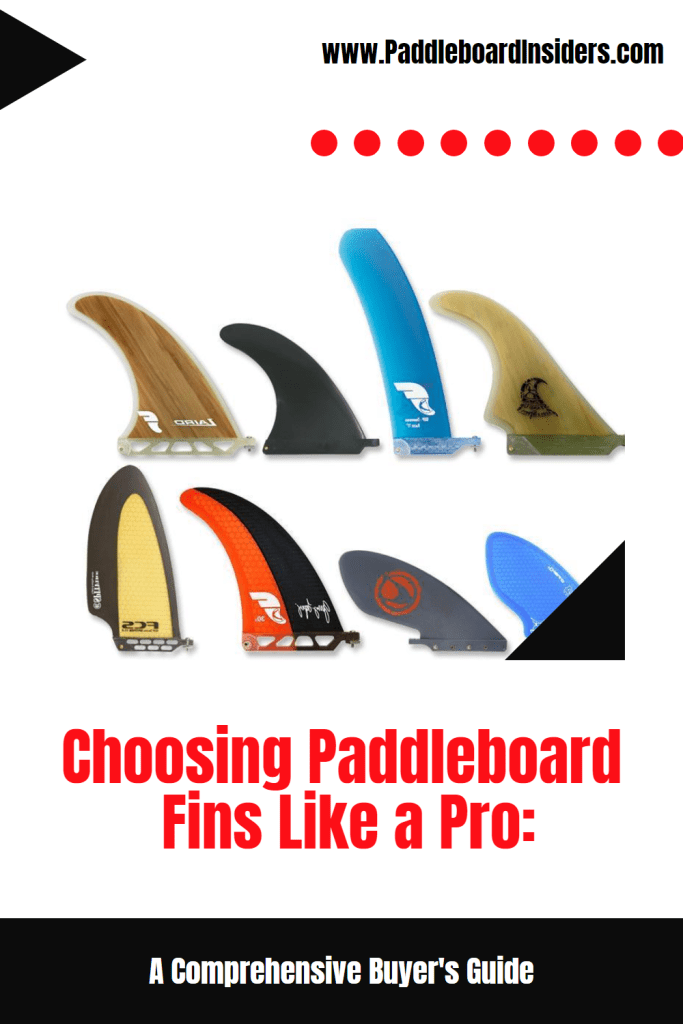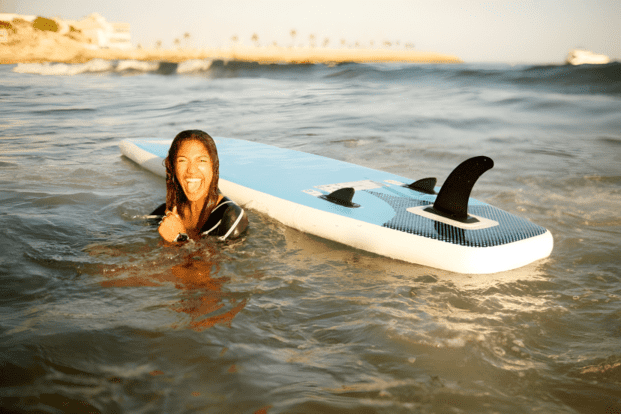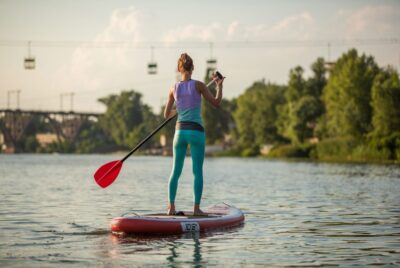Choosing Paddle Board Fins Like a Pro: A Comprehensive Buyer’s Guide
*We may earn a commission for purchases made using our links. Please see our disclosure to learn more.
A paddle board fin is a crucial part of any paddleboard setup. They play a significant role in stability, maneuverability, and tracking.
In this article, I will guide you through everything you need to know about paddle board fins, including common fin shapes, the best fin materials, and how to properly attach your paddle board fin so that you can make an informed buying decision on your next fin.
| Looking for our best paddle board product recommendations? Check the Paddleboard Insiders Buyer Guides |
Table Of Contents
- What Is a Paddle Board Fin?
- Does A Paddle Board Fin Really Matter?
- Common Paddle Board Fin Shapes:
- What Are The Different Fin Materials?
- What Are The 2 Different Paddleboard Fin Systems?
- The Best Paddle Board Fins – US Box System
- The Best Paddle Board Fins – Plug-In System
- How to Attach Your US Box Paddleboard Fins Easily:
- The Different Paddleboard Fin Setups:
- Are Paddle Board Fins And Surfing Fins Interchangeable?
- When Should You Replace Your Paddle Board Fin?
- Conclusion:
- FAQs
What Is a Paddle Board Fin?
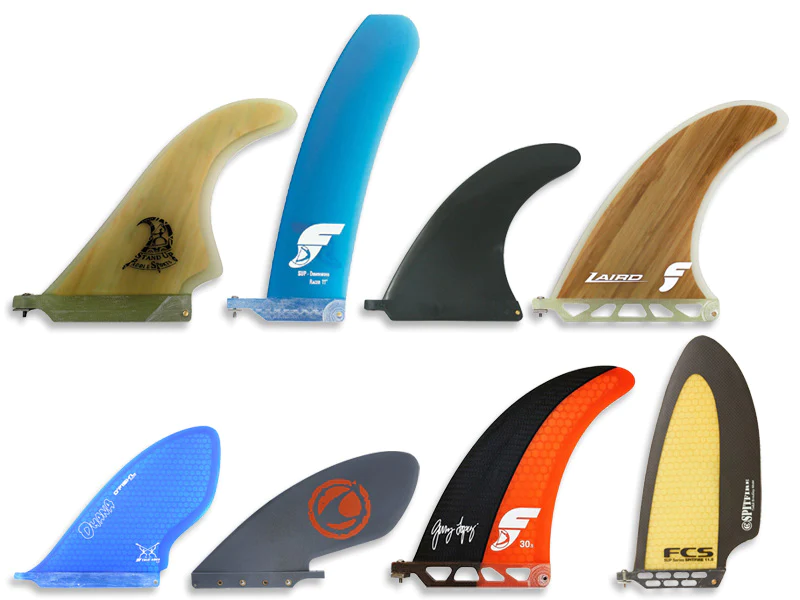
A paddle board fin is a removable or fixed component that is attached to the bottom of a stand-up paddleboard (SUP). It serves several important functions and plays a crucial role in the overall performance and handling of the paddleboard.
Essentially, a paddle board fin acts as a rudder, helping to control the direction and stability of the board while paddling on the water.
Paddle board fins come in various shapes, sizes, and materials, each designed to serve specific purposes and cater to different types of paddling activities. They are typically made from materials such as fiberglass, plastic, or carbon fiber, which offer different characteristics in terms of weight, flexibility, and durability.
Does A Paddle Board Fin Really Matter?
Paddle board fins may seem like small accessories, but they play a crucial role in the overall performance and handling of your paddleboard. Understanding why paddleboard fins are important and how they can impact your paddling experience is key to making informed choices. Here’s why paddle board fins matter:
The Primary Functions of a Paddle Board Fin Include:
Stability and Balance
One of the main purposes of a paddle board fin is to provide stability and balance to the board. It acts as a keel, preventing the board from sliding sideways or spinning uncontrollably in the water. By creating resistance against lateral movement, the fin helps the paddleboard maintain a straight path, making it easier to balance and paddle with stability.
Tracking and Directional Control
Tracking refers to the ability of a paddleboard to maintain a straight line while paddling. The design and placement of the fin significantly impact the tracking abilities of the board. A well-designed fin reduces side-to-side movement, allowing for better control and improved tracking. This ensures that the paddleboard stays on course, making paddling more efficient and reducing the need for constant course corrections.
Maneuverability and Turning
Paddleboard fins also play a crucial role in the maneuverability and turning capabilities of the board. Different fin shapes and setups can affect how the board responds to changes in direction. For example, a dolphin/swept back fin shape offers quick turns and responsiveness, making it ideal for SUP surfing. On the other hand, a skeg fin provides stability and straight tracking, making it suitable for flatwater paddling and touring.
Performance in Different Water Conditions
The selection of the right paddleboard fin is essential for optimizing performance in different water conditions. For example, longer fins with more surface area are typically used for flatwater paddling, as they provide increased tracking and stability. Shorter fins or multiple fin setups are preferred for SUP surfing, as they offer enhanced maneuverability and responsiveness in waves. Choosing the appropriate fin setup based on the specific water conditions can significantly enhance performance and overall paddling experience.
In summary:
A paddleboard fin is a vital component of a stand-up paddleboard that helps with stability, balance, tracking, maneuverability, and control. By selecting the right fin shape, size, and setup, paddleboarders can customize their board’s performance based on their preferred activities and water conditions. Understanding the functions and characteristics of paddleboard fins is essential for making informed decisions and maximizing enjoyment on the water.
Now that you know why a paddleboard fin is important – next you need to understand the common fin shapes.
Common Paddle Board Fin Shapes:
When it comes to paddleboard fins, various shapes are available, each designed to serve specific purposes. Let’s take a closer look at the most common fin shapes.
Dolphin/Swept Back Fin:
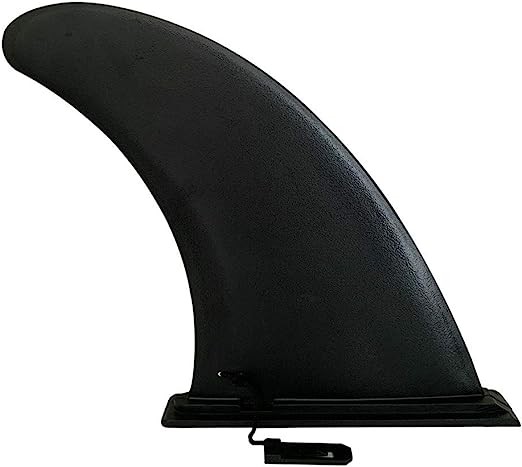
This shape is known for its excellent maneuverability, making it ideal for SUP surfing. It provides quick turns and responsiveness in waves.
Pros: Excellent maneuverability, responsive in waves, suitable for SUP surfing.
Cons: Reduced tracking and stability in flatwater conditions.
Wing Fin:
Wing paddleboard fins are commonly found on touring boards. These fins excel in providing stability and control during flat-water paddling, but they will also reduce speed.
Pros: Excellent stability and the ability to maintain straight path, perfect for touring and relaxed paddling.
Cons: Reduced speed and difficult to use in more shallow water conditions like rivers because of the length.
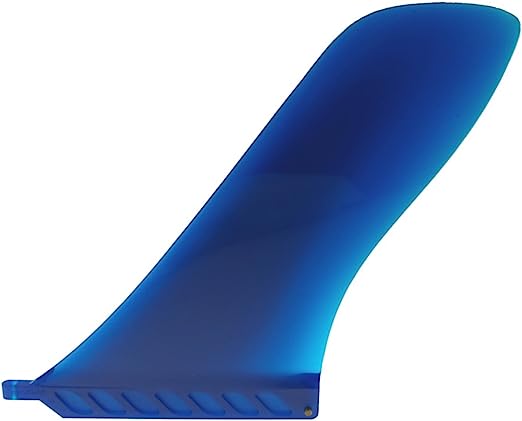
Daggerboard Fin:
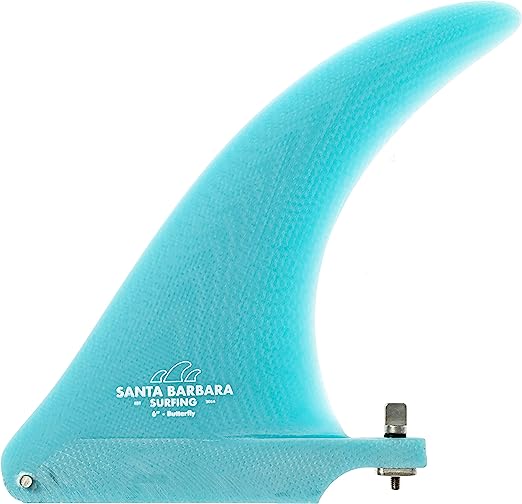
Daggerboard fins are similar to the wing fin. They are well-suited for heavy paddlers who prefer a straight-line riding experience. Their design provides excellent stability and enhances overall control during paddling sessions.
Pros: Give enhanced stability and control because of the strong edge. Good for casual paddling.
Cons: Reduced speed, struggle in shallow water and accumulate seaweed if you don’t have a shallow angle model.
Race Fin:
Race fins are really small and short because they want to offer as little resistance as possible to ensure speed. These fins are great for long races and touring board.
Pros: Excellent speed and acceleration. Great for racing.
Cons: Reduced stability and require more effort to maintain a straight line because of small fin.
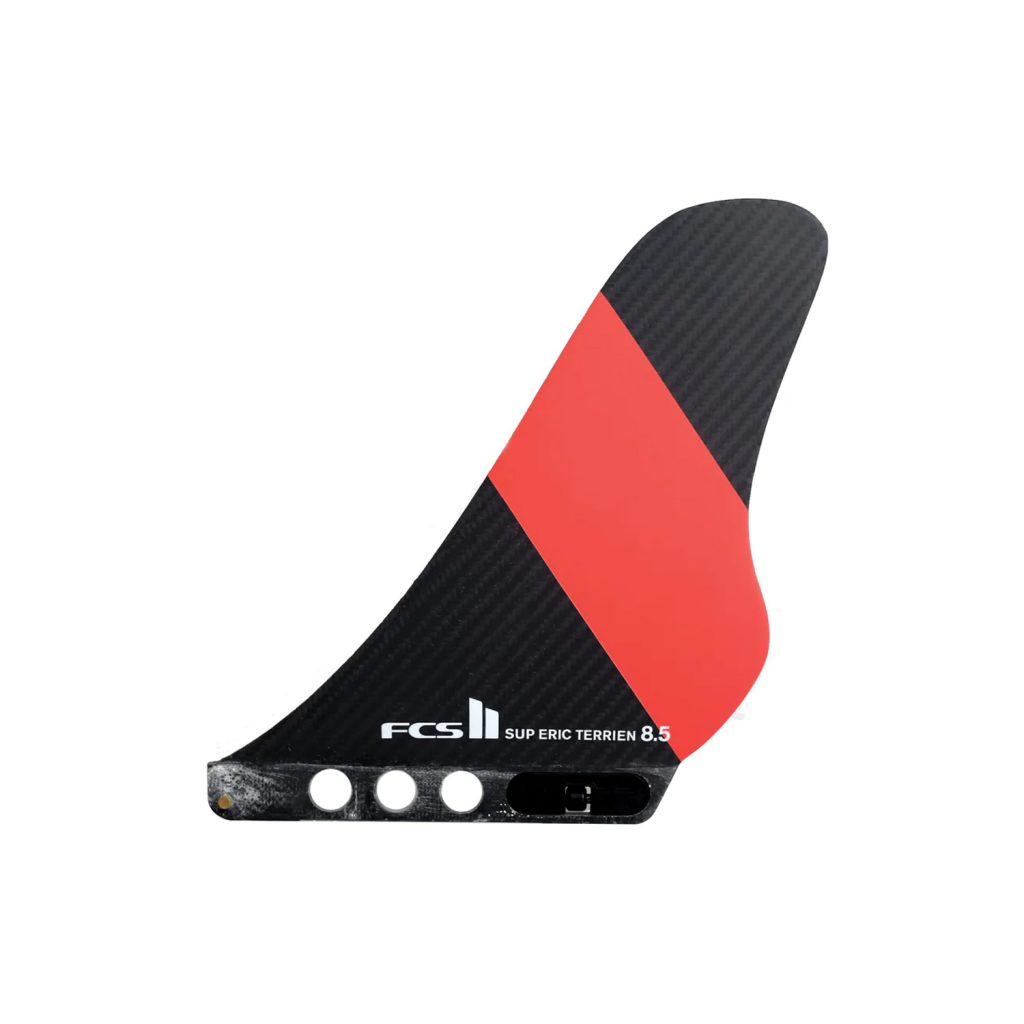
But what about the materials?
What Are The Different Fin Materials?
Paddleboard fins are made from different materials, each offering unique characteristics. Let’s compare some popular fin materials:
Fiberglass:
Fiberglass fins are lightweight and provide a good balance between flexibility and stiffness. They offer excellent performance and responsiveness in the water.
Benefits: Lightweight, good performance, and responsiveness.
Drawbacks: Can be more expensive than plastic, less durable than some other materials.
Plastic:
Plastic:
Plastic fins are durable and affordable, making them a popular choice for beginner paddleboarders. However, they may lack the performance and responsiveness of other materials.
Benefits: Affordable, durable.
Drawbacks: May lack performance and responsiveness compared to other materials.
Carbon Fiber:
Carbon Fiber:
Carbon fiber fins are incredibly lightweight and offer excellent rigidity. They provide exceptional performance and responsiveness, but they are usually more expensive.
Benefits: Lightweight, excellent rigidity, high performance.
Drawbacks: More expensive than other materials.
What Are The 2 Different Paddleboard Fin Systems?
When it comes to paddleboard fins, there are two systems that you need to know about. The US Box system originates from surfing where the fin needs to be extremely secure, and the plug-in fin system is used for inflatable paddleboard that are constantly being inflated and deflated (these are super easy to setup)
Here are my favorite paddleboard fins as of 2025.
The Best Paddle Board Fins – US Box System
3DFINS 3-Set Sup Fins (BEST OVERALL FIN)
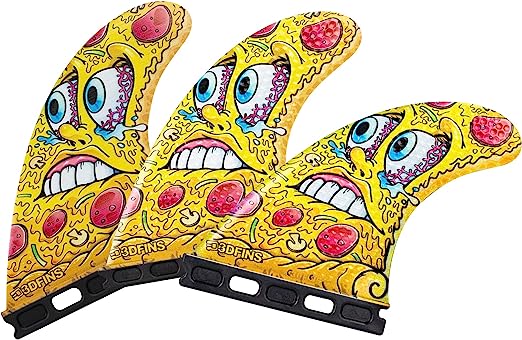
Where To Buy: Amazon
Features & Benefits:
- Uses dimple technology to reduce drag so that you are 15% faster while maintain stability and control.
- This fin will work for 99% of paddleboards.
- Suits all levels from beginner to advanced
- Awesome graphics and high quality.
saruSURF 4.6″ Shallow Water Fin (BEST SURFING FIN)
Where To Buy: Amazon
Features & Benefits:
- Gummy fin – Makes it versatile and difficult to break
- Great surfing/wave riding fin
- Will give you a lot of space to improve and grow as your paddleboarding develops.

SaruSurf 9″ Wing Fin (BEST TOURING FIN)

Where To Buy: Amazon
Features & Benefits:
- Extremely high quality and difficult to break – it should last you a LONG time
- This is a good fin for beginner paddlboarders that are looking for stability and straight line paddling.
- Can be a good beginner fin to learn surfing.
- NOTE – Screws are NOT included.
The Best Paddle Board Fins – Plug-In System
1 – Goosehill 9″ Dolphin Fin (BEST BUDGET FIN)
Where To Buy: Amazon
Features & Benefits:
- This fin works on 99% of paddleboard so it is a safe purchase.
- Great materials, well known brand and easy to install.
- They offer after-sale service so if you ever struggle with setup or a problem then they will help you.

2 – SBS 9″ iSUP Fin

Where To Buy: Amazon
Features & Benefits:
- Slide in fin for inflatable paddleboards
- Great budget-friendly replacement fin.
- 9″ for great stability and middle-range performance
- This is an extremely solid replacement fin.
3 – Aqua 9″ Fin
Where To Buy: Amazon
Features & Benefits:
- Slide in fin for inflatable paddleboards
- This is perfect for casual paddleboarders that just want to replace their fin
- Widely compatible with many SUP boards.
- Great lower-range option.

How to Attach Your US Box Paddleboard Fins Easily:
Properly attaching your paddleboard fin is essential for optimal performance and safety. Follow these steps:
Step 1: Locate the center fin box (this should be in the middle of the board)
Step 2: Remove the screw and slide the washer to the front with your finger
Step 3: Place the fin in the position that you want it and make sure that it is aligned straight
Step 4: Carefully push the fin down into place while ensure that you don’t damage the fin or the fin box
Step 5: Take your screw driver and push the washer so that it’s in line with the screw hole
Step 6: Use the screw driver to tighten (make sure it’s tight without stripping the screw)
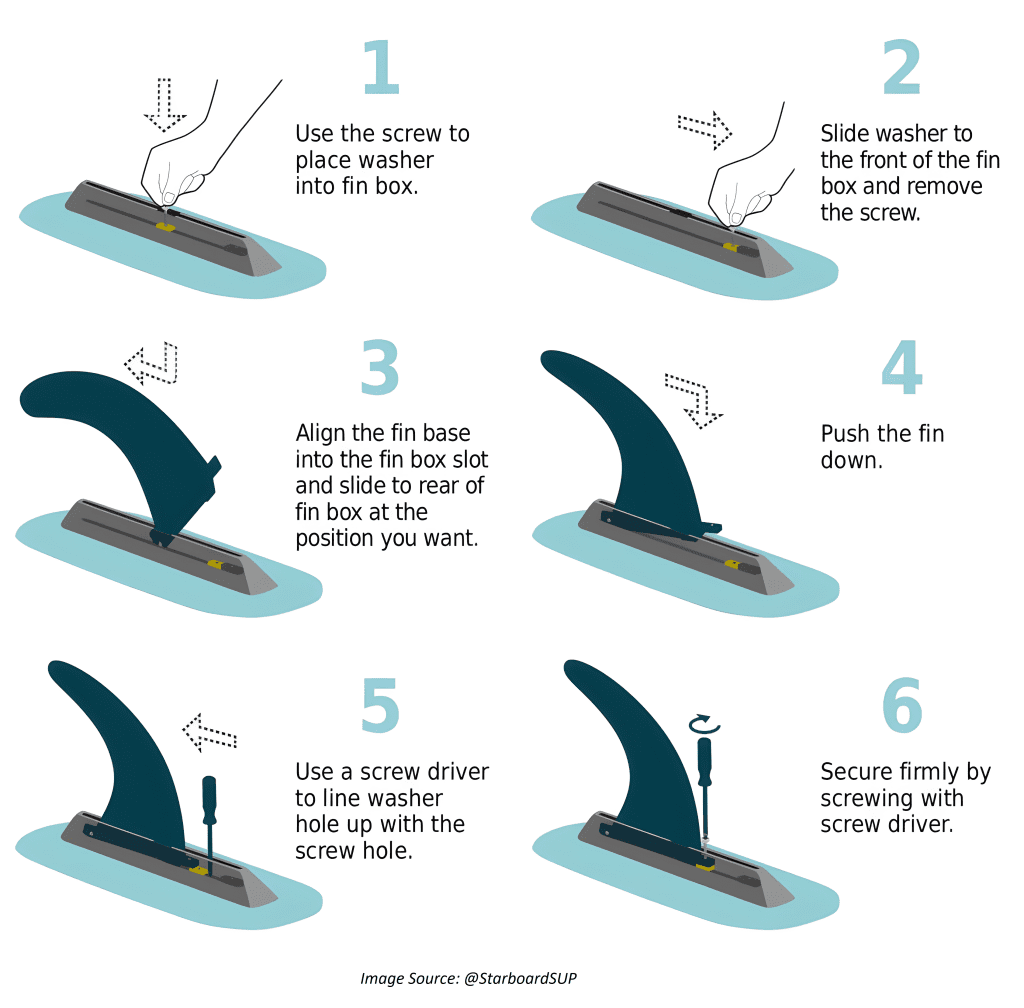
If you’re still confused then here is a great video that explains it:
Tips for Secure Fin Attachment:
- Always double-check the alignment of the fin with the fin box before inserting it.
- Use a fin screw or clip specifically designed for your paddleboard to ensure a proper fit.
- Regularly inspect your fin and fin box for any signs of damage or wear that may affect attachment or performance.
- Before heading out on the water, give the fin a gentle tug to ensure it’s securely attached.
Once you know how to attach the fin to your paddleboard, it’s time for a quick brush-up on the different paddleboard fin setups.
Note: Plug in fin systems are extremely easy – you just slide them into place and then insert the plug making it secure.
The Different Paddleboard Fin Setups:
When you are looking at paddleboards then you’ll probably notice that there are 3 different ways that they are setup on the board. Some SUP’s have a single fin, while others have 3 or even 5 fins. Which is right for you?
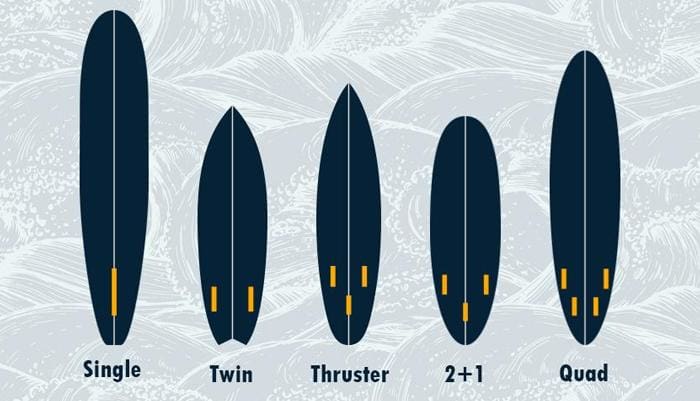
Image Source: SurfNation.com
Single Fin Setup: Perfect for Flat-Water Cruising
When it comes to flat-water cruising on a paddleboard, the single fin setup takes the lead. This configuration is ideal for those seeking a smooth and relaxed paddling experience without the added challenge of waves. It’s important to note that using a single-fin setup for wave riding requires advanced skills, as it provides only moderate control.
Riders opting for a single fin setup must possess a high level of balance since this configuration offers less board stability compared to other setups. However, the advantage lies in reduced drag and increased speed, making it an excellent choice for those craving a need for velocity.
2 + 1 Configuration: Optimal Stability for All Skill Levels
The 2 + 1 configuration stands out as the most popular setup for stand-up paddleboarding. In this setup, a large fin is flanked by two smaller ones, ensuring enhanced stability overall. Compared to the single-fin system, the 2 + 1 configuration provides superior stability, making it a preferred choice for riders of varying skill levels.
Less experienced riders seeking additional support from their boards often favor the 2 + 1 configuration. However, it’s worth noting that this setup comes with increased drag and reduced speed. Nevertheless, the trade-off in stability makes it a valuable choice for those seeking a more controlled and secure paddling experience.
4 + 1 Configuration: The Ultimate Balance of Stability, Speed, and Maneuverability
For individuals in search of the perfect balance between stability, speed, and maneuverability, the 4 + 1 configuration reigns supreme. With four smaller fins stabilizing the board and no large center fin, riders can enjoy enhanced control and reduced drag. This configuration is particularly suited for advanced riders seeking an exhilarating and challenging stand-up surf.
It’s important to note that beginners in stand-up paddleboarding might find the 4 + 1 configuration more demanding. However, for those seeking an exciting and thrilling wave-riding experience while maintaining excellent control, this setup offers the ideal combination of stability, speed, and maneuverability.
So next common question I get all the time.
Are Paddle Board Fins And Surfing Fins Interchangeable?
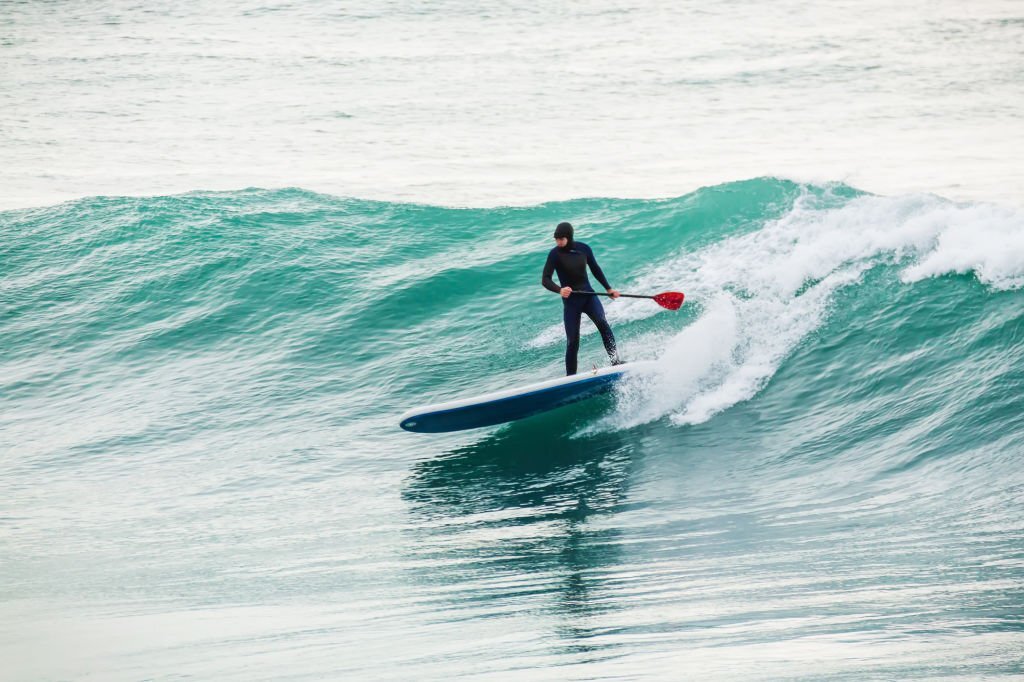
While paddle board fins and surfboard fins share similarities, they are not exactly the same. There are some key differences between the two, considering the distinct characteristics and purposes of paddleboarding and surfing.
Paddle Board Fins:
Paddleboard fins are designed specifically for stand-up paddleboards (SUPs). These fins are typically longer and larger compared to surfboard fins. A paddle board fin provides stability, balance, and tracking, assisting in maintaining a straight course and preventing the board from drifting sideways. They are crucial for efficient paddling and maneuverability in various water conditions.
Surfboard Fins:
Surfboard fins, on the other hand, are designed for surfboards used in wave riding. These fins are generally smaller and can vary in shape, including single fins, thruster (three-fin) setups, or quad (four-fin) setups. Surfboard fins primarily focus on maneuverability and control on the face of the wave. They provide grip, responsiveness, and the ability to execute turns and maneuvers while riding waves.
While there are differences in size, shape, and purpose, it’s worth noting that some paddleboards, specifically those designed for SUP surfing, may have fin setups similar to surfboards. These setups often include multiple smaller fins or configurations that offer increased maneuverability and responsiveness in waves. However, in general, paddleboard fins and surfboard fins serve distinct purposes based on the activities they are designed for.
So, while paddleboard fins and surfboard fins may share some similarities in terms of function and design principles, they are not exactly the same due to the varying requirements of stand-up paddleboarding and surfing.
When Should You Replace Your Paddle Board Fin?
Knowing when to replace your paddle board fin is essential to ensure optimal performance and safety during your paddling adventures. While there isn’t a specific timeframe for replacement, there are some signs to look out for that indicate it’s time to replace your paddle board fin:
Damage:
If your fin has visible cracks, chips, or significant damage, it’s crucial to replace it. Damaged fins can compromise stability, control, and overall performance.
Bent or Warped:
Fins can become bent or warped over time, especially if they have experienced impacts or excessive force. A bent fin can affect tracking and maneuverability, leading to an imbalanced paddleboarding experience.
Loose or Wobbly:
If your fin is consistently loose or wobbly, even after tightening it properly, it may be an indication of wear and tear on the fin box or fin screw. In such cases, replacing the fin or addressing the fin box issues is recommended.
Performance Decline:
If you notice a significant decrease in your board’s performance, such as reduced speed, difficulty in tracking straight, or decreased stability, it could be a sign that your fin is worn out or no longer suitable for your paddling style.
Upgrading or Experimenting:
Sometimes, you may choose to replace your fin to upgrade to a different shape, size, or material to enhance specific aspects of your paddling experience. Experimenting with different fin types can help you fine-tune your board’s performance to your preferences.
Ultimately, it’s important to regularly inspect your paddle board fin for any signs of damage or wear and listen to your own experience on the water. If you notice any issues impacting performance or safety, it’s advisable to replace the fin promptly. Consulting with a paddleboard expert or a local retailer can provide further guidance on selecting the right replacement fin for your specific board and paddling style.
Conclusion:
Understanding paddle board fins and their different shapes, materials, and proper attachment methods is crucial for a rewarding stand-up paddleboarding experience. Whether you’re planning to ride waves, explore calm lakes, or enjoy long-distance paddling, choosing the right fin can greatly enhance your performance and enjoyment on the water. Remember to consider your specific needs, preferences, and the water conditions you’ll be paddling in when selecting a fin for your paddleboard.
| Looking for insider guides to some amazing paddle boarding locations? Check the Paddleboard Insiders Location Guides |
FAQs
Are paddle board fins interchangeable?
In most cases, yes. However, it’s important to ensure compatibility with your specific paddleboard’s fin box. See the detailed explanation above.
Can I paddle without a fin?
While it’s possible to paddle without a fin, it will significantly impact your ability to track and maneuver the paddleboard.
| Looking for a new paddleboard? 7 Incredible Beginner Paddleboards To Buy In 2025 On A Budget |
How often should I replace my paddle board fin?
The lifespan of a paddle board fin depends on usage and care. Inspect it regularly for any signs of damage or wear, and replace as needed.
Can I use different fin shapes on the same paddleboard?
Yes, many paddleboards allow for interchangeable fin setups, allowing you to experiment with different shapes based on your preference and activity.
Are there any specific maintenance tips for paddle board fins?
Keep your fin clean by rinsing it with freshwater after each use. Inspect for any debris or damage and store it in a protective cover when not in use to prevent scratches or breakage.
